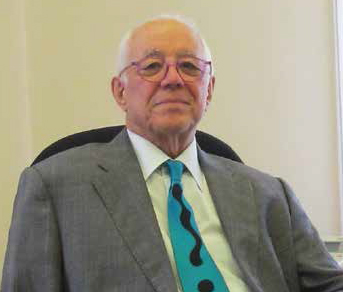When I came to Serbia three years ago, what took me by surprise the most was how much your lifestyle resembles the Mediterranean one. You are like Spain a lot in this respect, and there is a great match in terms of culture that stems from this resemblance.

Cultural institutions in Serbia have been incredibly receptive to the cooperation with the Cervantes Institute, and our cultural activities have been well received by the people – says Mr. Enrique Camacho, Director of the Cervantes Institute in Belgrade.
Belgrade has joined Madrid and several other cities around the world in public readings of the adventures of Don Quixote and Sancho Panza. What Don Quixote symbolizes to you today, and how do people around the world perceive and understand him?
The public readings of Don Quixote are taking place for the third consecutive year. The rationale behind it is to direct attention to this masterpiece of world literature and the first modern novel of the European literature. Don Quixote and Sancho Panza, as the main characters in the novel Don Quixote, are universal heros that are fighting for universal values which have sustained themselves with success for centuries now. It is interesting to note that the two of them change their roles in the novel. Don Quixote would occasionally assume the role of Sancho Panza and vice versa. In doing so, we see the wisdom and craziness, realism and idealism constantly being intertwined. Regardless of their differences, they continue to fight together for freedom and justice, and stand firm against injustice in the society that they were destined to experience.
It is important to note that the novel talks about life not being strictly black and white, but rather having many nuances of grey.
Writer and academic, Martin de Riquer famously said that he congratulated everyone who hadn’t read Don Quixote as yet, because they „still have that satisfaction of discovering it“. I do hope that your readers will have the same satisfaction.
How much is the distinctiveness of the Spanish culture intervowen with the cultural life in Serbia, and how do they resonate with each other?
When I came to Serbia three years ago, what took me by surprise the most was how much your lifestyle resembles the Mediterranean one. People are very warm, they express their emotions effortlessly and communicate easily. They also like to go out and spend time outdoors, they nurture friendships and family, and are very interested in culture. You resemble Spain a lot in this respect, and there is a great match in terms of culture that stems from this resemblance. Our cooperation with the Guitar Art Festival, the Dance Festival, the Jazz Festival. FEST, the Archeological Film Festival, the Magnificient 7 Festival and numerous others has been truly outstanding.
The diva of the Spanish film, Ana Belen was recently given the Golden Stamp award in Belgrade. You have also sent thank you notes to all cultural institutions in Serbia for their contribution to promotion of the Spanish audio-visual art in Serbia. Which institutions in Serbia do you cooperate the best with?
At the closing ceremony of a film retrospective dedicated to the Spanish actress, singer and film director, Ana Belen, we wanted to thank those institutions that had contributed to the dissemination of the Spanish language and culture in the Spanish language in audio and visual arts. These are, first and foremost, DEXIM Film, the Belgrade Cultural Centre, the Novi Sad Cultural Centre, the National Museum, the Grad Cultural Centre, Mikser Belgrade, Dom Omladine, the Yugoslav Film Archives and FEST. We should also not foroget the National Theatre in Belgrade, the City of Belgrade Assembly, the Mihajlo Pupin Institute, the Guitar Art Festival, the Jazz Festival and the Dance Festival. Last but not least, we would like to extend our special thanks to the Belgrade Faculty of Philology, the Faculty of Philology and Arts from Kragujevac, and the Novi Sad Faculty of Philology which have been nurturing the Spanish language and culture in the Spanish language.
Spanish is one of the most popular languages in Serbia that is not taught at regular schools. How many people attend your Spanish language courses each year?
The Cervantes Institute in Belgrade was opened in 2004, and, until the onset of the global economic crisis, the Institute had around 2,000 students per year. Unfortunately, the crisis did result in a drop of the number of students, but, in the last year or so, this number has started to grow again. In the beginning, we held courses for both young people and adults, and, in the last couple of years, we extended our offer to include specialized courses for children, theatre workshops for the youngsters ages 4 to 6 and courses for children ages 6 to 11.
Magic of comics for the youngsters
Thanks to you we have a national competition for the best short film in Spanish language filmed with a mobile phone called ‘Cervantes Showcases…’. Is the competition going to continue in the future too?
Three years ago, we launched the comics and short film competition for the pupils from primary and high schools. The primary school pupils can participate in the comics competition because their linguistic capabilities are not sufficiently developed to write stories in Spanish, and comics are the best medium for them to express themselves. High schoolers can participate in the short video competition that they can make with their mobile phones. Our goal is to have all schools participating next year, both those which teach Spanish and those which do not.